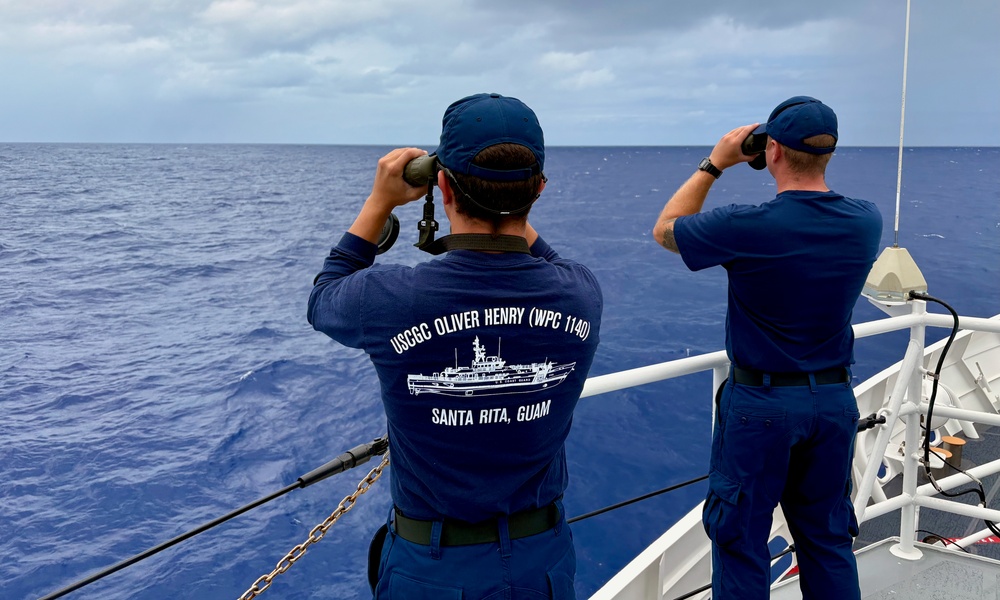DVIDS – News – Coast Guard Cutter Polar Star conducts research, collects valuable high-latitude data to expand knowledge of remote Arctic region
JUNEAU – The Seattle-based Coast Guard Cutter Polar Star (WAGB 10) arrived in Juneau Friday for a logistics stop as the crew nears the end of their months-long Arctic deployment conducting scientific research and protecting the nation’s maritime sovereignty and security throughout the polar region.
In addition to Polar Star’s strategic national security objectives, the nation’s sole heavy icebreaker sailed north with scientists and researchers aboard to work in partnership with the U.S. Army Corps of Engineers Cold Regions Research and Engineering Laboratory (CRREL), the National Oceanic and Atmospheric Administration (NOAA), University of Washington, and Woods Hole Oceanographic Institute (WHOI) to gather data and lessen the void of information from the region and better understand how to operate year-round in Arctic waters.
“The Arctic is cold, dark, and difficult to navigate in the winter,” said Capt. Bill Woityra, the Polar Star’s commanding officer. “Deploying with researchers and scientists aboard has aided in the development, understanding and pursuit of technologies that will mitigate risks and enable future mission performance so that looking forward, the Coast Guard can safely operate continually and effectively in this remote environment.”
Working aboard Polar Star, Shalane Regan, a member of the Coast Guard Research and Development Center (RDC), teamed up with Lt. Lydia Ames, a NOAA Corps officer to assist CRREL researchers by deploying buoys onto the ice where they will, over time, collect and transmit information about ice flow to help fill in data gaps for higher latitude oceans.
The Polar Star crew also aided in a research project concerning water flow regimes in the Arctic, specifically the Chukchi Sea, a study developed by Dr. Robert Pickart of WHOI. The data collected during Polar Star’s patrol will be used to develop a more complete understanding of the hydrology of the dynamic region.
To support Dr. Pickart’s research, WHOI provided 120 Expendable Conductivity-Temperature- Depth (XCTD) instruments to measure temperature and salinity. These profiles of the water column will give a better picture of what water and nutrient flow look like in the Arctic winter. Polar Star crew members deployed the probes every 12 hours when above 65 degrees north.
Additionally, Regan, who is a mechanical engineer and researcher with the RDC Surface Branch, worked with other scientists and researchers on board to find ways to operate most effectively in the frigid Arctic environment.
For technology, Regan brought a 3D printer and Remotely Operated Vehicle aboard Polar Star to evaluate how the systems would react to the Arctic climate and ship life.
“I used the 3D printer to complete many small projects that resulted in large lifestyle improvements for the crew,” said Regan. “Most importantly, the knowledge I was able to gather about larger issues the crew faces, for example, visibility issues due to frost accumulation on the bridge windows, I can take home for my team to develop solutions that will create a better-equipped, mission-ready fleet.”
Another big item the RDC team is focusing on is underway connectivity, specifically in the Arctic region.
To better understand high latitude communications, The Mobile User Objective System (MUOS) was installed on Polar Star to test its abilities at high latitudes in the harsh Arctic winter conditions. Developed for the U.S. Navy by Lockheed Martin, the MUOS is an ultra-high frequency satellite communications system that provides secure connections for mobile forces.
“Looking towards the future, all signs point toward the Coast Guard deploying more platforms to the Arctic, more often and during different seasons of the year,” said Woityra. “The Coast Guard is robustly proficient at summer-time Arctic operations, while winter presents an entirely new set of challenges. Polar Star’s winter Arctic deployment has served to better understand and prepare for the challenges of operating in such a harsh and unforgiving environment.”
The cutter will be visiting Juneau to close out its operational patrol and will be moored downtown through the weekend. Due to COVID-19, the cutter will not be open to the public for tours. Media interested in speaking with a member of the Polar Star’s command are requested to email cynthia.s.oldham@uscg.mil to arrange an over-the-phone interview.
| Date Taken: | 02.12.2021 |
| Date Posted: | 02.12.2021 14:12 |
| Story ID: | 388999 |
| Location: | JUNEAU, AK, US |
| Hometown: | SEATTLE, WA, US |
| Web Views: | 212 |
| Downloads: | 0 |
PUBLIC DOMAIN
This work, Coast Guard Cutter Polar Star conducts research, collects valuable high-latitude data to expand knowledge of remote Arctic region, must comply with the restrictions shown on https://www.dvidshub.net/about/copyright.


 Private Internet Access gives you unparalleled access to thousands
of next-gen servers in over 83 countries and each US state. Your
VPN experience will always be fast, smooth, and reliable.
Private Internet Access gives you unparalleled access to thousands
of next-gen servers in over 83 countries and each US state. Your
VPN experience will always be fast, smooth, and reliable.
